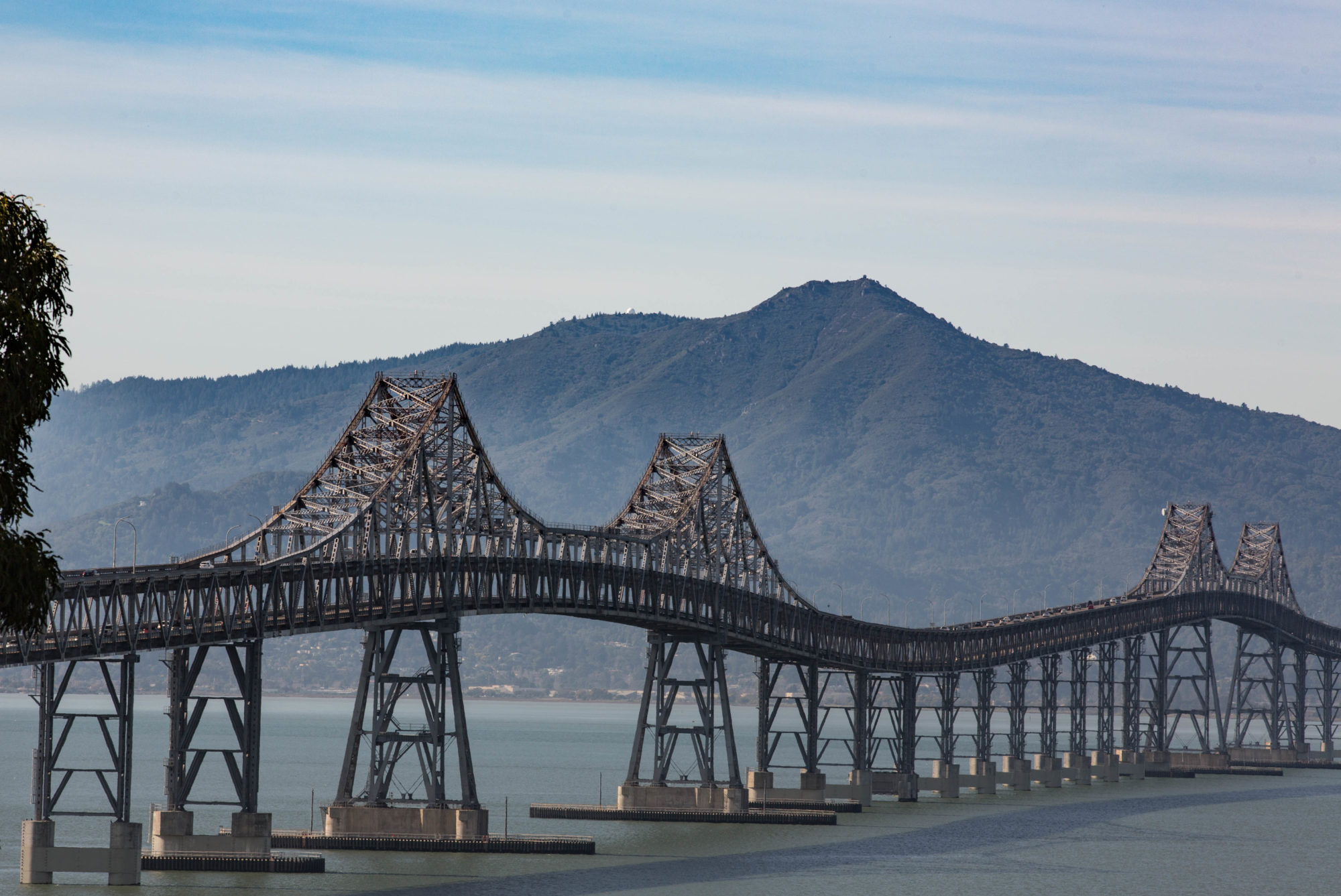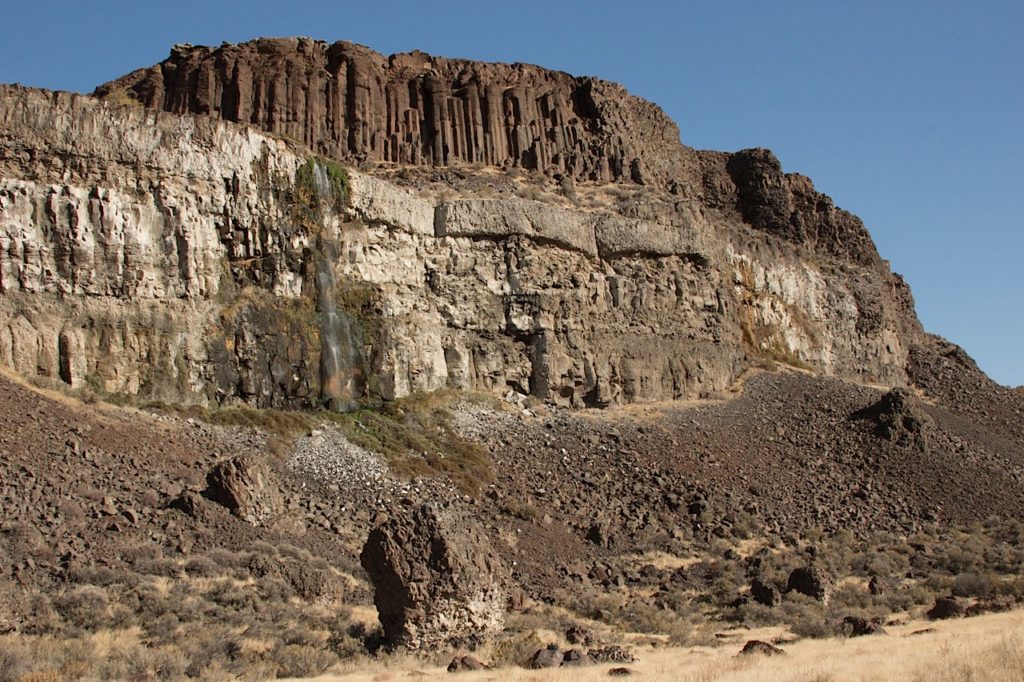Another slice of the Great Scablands Tour of 2013 (yes, I’m back home now, sorting through the pile of pictures indiscriminately shot over the five days poring over landscapes). On the third day of the eastern Washington trip, we started in Wenatchee, took a long hike in Potholes Coulee, then headed to the tri-cities of Richland, Pasco, and Kennewick. Before sunset, we stopped at the “Wild Horses” sculpture along Interstate 90, just across the Columbia River from the town of Vantage.
I remembered the spot from driving through here in 2011 with Eamon and Sakura: a string of metal horses dancing along the skyline on a bluff just east of the highway. We had pulled into the parking lot but didn’t have time to stop and hike up to the sculpture. My trip with Randy, though, was more about taking the time to do that (though as always I was a little worried I was holding us up through my repeated insistence on stopping to snap grain elevators, rocks, road cuts, plowed fields, riverscapes, wind turbines, declining small-town Main Streets, and whatever else the terrain offered up).
So we hiked up the steep trail from the parking lot, took some pictures, then hiked to an even higher ridge where we could see how the how the rolling Palouse country came to an abrupt stop as it encountered the flood-sculpted course of the Columbia. Up close, the horses are even more striking than they are from below. The installation is actually called “Grandfather Cuts Loose the Ponies” and is a conception of a Native American creation story by Washington state sculptor David Govedare:
“Creatures of this planet, behold, a Great Basket! I send this basket, bearing the gift of life, to all corners of the universe. Now take these ponies, I am cutting them loose. They will inspire a Spirit of free will. They will be a companion for work and play on this planet. This is a way for you to see how all life depends on all other life. This basket is my heart. You are at one with me. Eagle of the sky, we look to you for vision. Salmon of the water, we look to you for life-giving sustenance. Deer of the land, you provide a bountiful tranquility for our Mother Earth.
“From the center of my Basket burns the fire of our collective souls. Humans, you are responsible. You have the power of reasoning and the gift of free will. Use them wisely. Always be aware of the limitless nature of this ever expanding universe. Let us live to inspire each other.”
A 2008 story in the Seattle Times (“All the pretty horses of Vantage are only half done“) explains that Govedare has been trying for years to raise funds for the Great Basket portion of his installation. Aside from the cost–$350,000–Govedare has encountered skepticism from those who feel the proposed “basket” resembles a giant satellite dish a little too closely.
One other thing to note here: The graffiti. As you’ll see in the slideshow below, lots of visitors have given free rein to their urge to scrawl and doodle. Randy expressed disgust at this and at some level, yeah, it would be nice if people could refrain from leaving their marks. On the other hand, I’m reminded of the multitudes who’ve done the same thing on natural features across the West and the rest of the world–people just have to let you know they were there. (Although sometimes you wonder what’s going on in their heads. Case in point: the two Korean exchange students who were busted after scratching their names into Inscription Rock at New Mexico’s El Morro National Monument. There’s something ironic there, in that the rock has been described as “the sandstone bluff that is the birthplace of graffiti in America.” People have been doodling and scrawling there since long before the first European colonists passed by. As the students found out, now it’s historic, and off-limits to the casual graffitist.)




